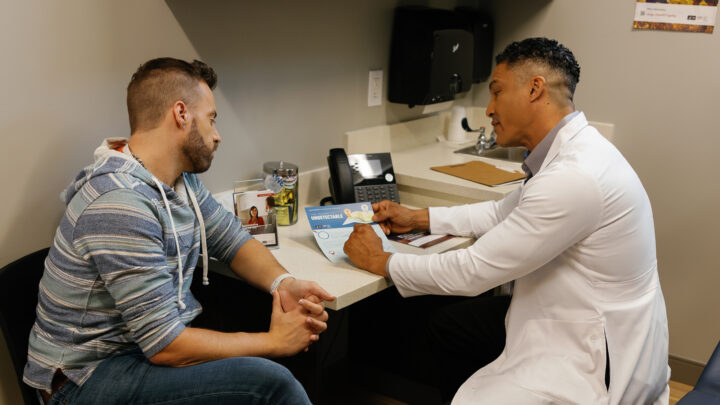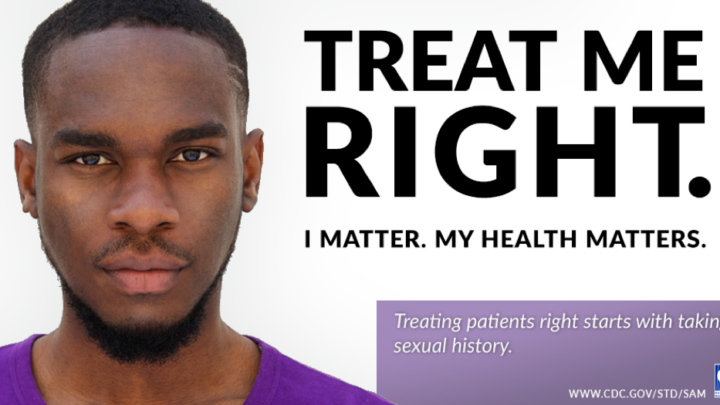
Many people face barriers that affect their access to health care, particularly individuals seeking HIV prevention and care services. These barriers include discrimination, inadequate housing or employment, or a lack of health insurance. For transgender people, these barriers are compounded by the stigma they may face in health care settings and a lack of access to welcoming, supportive health care. As a provider, you can support access to HIV prevention and care for transgender people through how you structure and manage your practice. Here are four strategies that you can use to promote gender-affirming care in your practice:
1. Practice Gender-Affirming Communication: One of the most important things you can do to create a welcoming environment for all people is to address patients using their preferred names and correct pronouns. Discussing gender identity and sexual orientation with your patients will help you identify your patients’ specific health needs and determine how to address any relevant health concerns.
Providing inclusive care begins with how and where you ask your patients about their gender identity and sexual orientation.
- Ask considerate questions, such as, “How would you like to be addressed?” or “What name and pronouns would you like me to use?”
- Consider asking questions in a discreet manner or in a private area of the clinic to protect patient privacy and prevent stigma.
- Ensure that your registration forms include fields about gender identity, listed sex at birth, preferred name, and pronouns.
- Make sure all staff can access, understand, and communicate the information accurately.
2. Establish Inclusive Policies: The policies you set in your practice shape the care environment and ultimately your patients’ experiences. By establishing gender-affirming policies and training for staff, you can ensure that best practices for inclusive care become part of your practice. This combination of policies and staff training can help foster and perpetuate a positive environment for your transgender patients.
- Consider adding “gender identity and expression” to your nondiscrimination policies.
- Update policies about the physical environment and train managers and other staff to understand and implement the policies. For example, implement a policy that allows people to use the bathroom that matches their gender identity, or offer single-occupancy bathrooms for all genders, supported by appropriate signage.
- Post your policies in visible, prominent places in your practice and on your website.
- Hold annual trainings for all employees on gender-affirming care and how that concept is supported by policies in your practice.
- Provide patients and staff with clear steps for referral in case there is a need for feedback or to answer questions about a new policy.
3. Create a Welcoming Environment: The care environment can have a significant impact on your patients’ overall experience and their level of comfort when they visit your practice. You can utilize physical space and promotional materials to proactively let patients and potential patients know they will be welcomed in your practice.
- Provide spaces where patients can privately discuss personal or sensitive matters with clinic staff. In this video from the National LGBTQIA+ Health Education Center, transgender people share their positive health care experiences when receiving gender-affirming care from their providers.
- Add trans-friendly signage at the entrance to the facility and at the entrances to bathrooms.
- Consider featuring images of transgender people of various races and ethnicities, including staff from your practice, in your educational and marketing materials, including your website, social media posts, and print materials such as brochures. You can view and order patient education materials from the Centers for Disease Control and Prevention (CDC) and review materials from the National LGBTQIA+ Health Education Center.
4. Engage the Community: You and the members of your practice can play an important role in engaging with your community in an inclusive and supportive way. Going beyond the walls of your practice to build relationships with your local transgender community can bring their support and energy into your sphere of patient care. Connect intentionally with people in your community who have the skills, lived experience, and reach to support gender-affirming care.
- Make connections with people in your community who can support your efforts to provide inclusive care.
- Consider employing transgender people from your local community as peer educators for your practice.
- Partner with local LGBTQIA+ community groups to sponsor or cohost in-person or virtual events to commemorate important months or observance days, such as:
- Transgender Day of Visibility (March 31)
- National Transgender HIV Testing Day (April 18)
- LGBTQ+ Pride Month (June)
- International LGBT+ Pride Day (June 28).
Implementing these strategies in your practice and with your community can promote inclusive care by helping build relationships based on understanding and trust. By establishing such relationships with your patients, you can best learn about their health care needs and partner with them to overcome barriers to accessing health care. CDC has developed tools and resources to help you take steps to deliver gender-affirming care in your practice. To learn more, visit HIV Nexus: www.cdc.gov/hiv/clinicians/transforming-health














